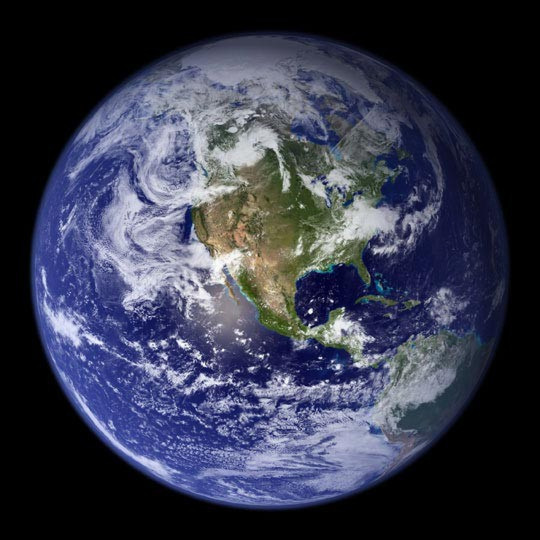Japanese Earthquake Likely Moved The Earth’s Axis

The Japanese earthquake shook the Earth so violently that it likely moved its axis and shortened the day, according to new research.
While the change from the earthquake isn't noticeable -- no need to reset your watch -- it was the largest calculated by Dr. Richard Gross of NASA's Jet Propulsion Laboratory. It's not all that surprising considering the earthquake was the fifth largest measured since 1900. He found that the day is shorter by 1.8 millionths of a second, and the Earth's axis shifted by 17 centimeters (6.5 inches).
It's the only earthquake we have had a chance to measure, with the other earthquakes, the effect has been too small to calculate, Gross said.
To find out how the 9.0 magnitude earthquake affected the Earth's rotation, Gross used a United States Geological Survey estimate for how the fault responsible for the earthquake slipped. From there, he applied a complex model to perform a preliminary theoretical calculation.
He found was that the earthquake in Japan shifted its axis towards 133 degrees east longitude, a line that runs through eastern China and Siberia.
At the base of these complex calculations was the earth's mass. I started by determining how mass is distributed within the earth. And then I looked at the seismic estimates on how much the fault slipped - that tells me what force was applied to the earth at the position of the earthquake that caused it to deform. That deformation, which happens everywhere, is what I'm computing, Gross said.
Essentially, Gross calculated how the earthquake rearranged the earth's mass. Any change in mass will have an effect on the earth's axial tilt and will affect its rotation. The end result is a change in the day's length.
It's like a spinning ice skater. If her arms are closer to her body, it changes how her mass is distributed. If her mass is closer to her body, she will spin faster, Gross said.
Gross' calculations do come with a caveat. He calculated the location of the Earth's figure axis, which is the line drawn through the center of the earth based on its distribution of mass. It is always changing because of atmospheric winds and oceanic currents. These effects are bigger than anything that an earthquake can cause. This differs from its north-south axis, which is the one around which the Earth rotates. The difference between the two does create a tiny wobble which is why the length of the day isn't absolutely uniform.
Over the course of a year, the length of the day increases and decreases by about a millisecond, or about 550 times larger than the change caused by the Japanese earthquake. The position of Earth's figure axis also changes all the time, by about 1 meter (3.3 feet) over the course of a year, or about six times more than the change that should have been caused by the Japan quake, Gross said.
What Gross and other research scientists will have to do is measure the effects of the atmosphere and ocean on Earth's rotation during the time of the earthquake and remove them from the equation. Even when these calculations are completed, Gross says it's likely that impact will still be measurable -- an impressive feat for an earthquake.
© Copyright IBTimes 2025. All rights reserved.





















